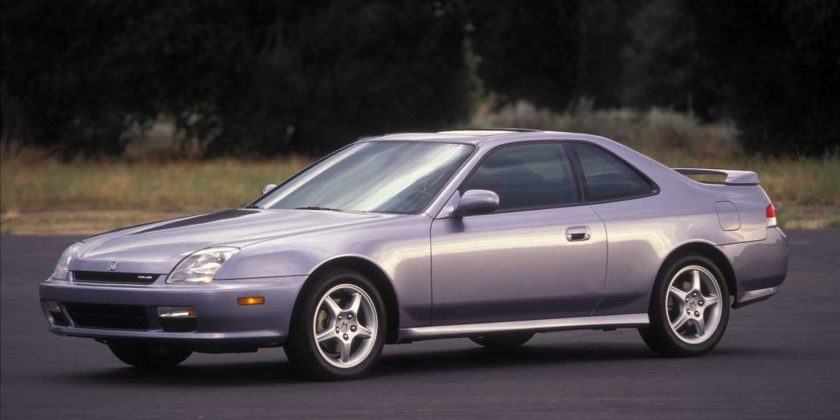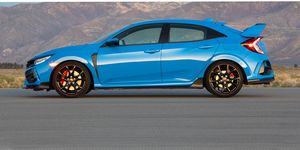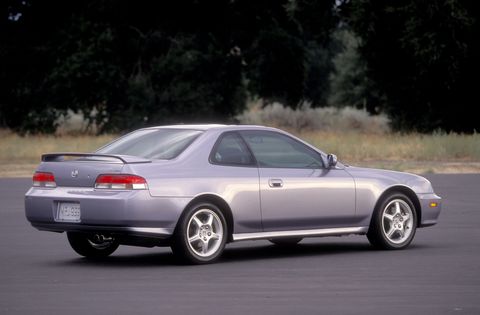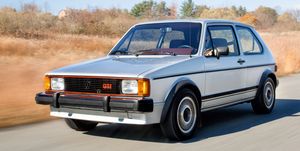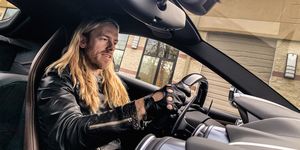In 1999, James Bond saved the world for the 19thtime—all for Queen and Country—in the World Is Not Enough, Porsche made the luftgekuhlt crowd crazy with its water-cooled 996 generation 911, and Honda gave the 5th generation Prelude a mid-cycle update bringing its 2.2-liter VTEC equipped four-cylinder’s horsepower to an even 200. Oh, and I was 19.
Welcome to my youth. The three aforementioned things were the most important in my life. And the most attainable one, actually the only realistically obtainable one, was that Honda Prelude. Truthfully, even that was optimistic. My car at the time was a 1989 Acura Integra. It was little more than a hopped up, twin-cam version of the Honda Civic, and I adored it.
You might be thinking, ‘200 hp? Whoop dee do!’ But bear in mind that the same year the Prelude made 200 horsepower, the 996 generation Porsche came with 296, Corvettes rocked out with 345, even the almighty Dodge Viper, with its 8.0-liters pumping at full bore, brought no more than 450 to its rear wheels. Hell, the top-of-the-line Ferrari 550 Maranello, managed no more than 479 from its glorious 5.5-liter V12. My point is, 200 for a front-wheel-drive coupe was a darn decent number back then.
And 1999 also predates much of the modern conundrums us enthusiasts deal with today. The transmission was a five-speed manual with a nice metal bar linking the shifter to the gearbox. The steering was hydraulically assisted and did not, because it could not, damp out any feel coming from the road. There were two driving modes: on and off.
Even all the little details inside were pleasant, more directly telling you information in an analog way. The only screens in the car were tiny and told you the time, nothing more. All the instrumentation included physical needles moving along a path of measured amounts. In other words: real gauges. Even the odometer was a real dial. Remember those?
And yet, it was also far enough along in automotive history that we figured out the importance of a chassis’ structural integrity. Moreover, computers, throttle bodies, and fuel injectors replaced carburetors to precisely squirt gasoline into the intake to make engines run more efficiently and reliably than ever before.
Novel technology of the era was Honda’s variable cam profile system, called VTEC, short for Variable Valve Timing and Lift Electronic Control. VTEC adjusted both valve timing and lift to increase top end performance at high rpm, but keep fuel consumption down at low rpm. It was first introduced in the U.S. on the Acura NSX, but found its way into several Honda products in the 1990s, including this Prelude you see here.
And VTEC is cool! The system is like a small turbocharger kicking on, without first suffering through some turbo lag. And even after all these years, the Prelude still feels quick. That’s thanks, in part at least, to the larger cam lobes taking over around 5,500 rpm and changing the sound of the engine as it gives an extra nudge.
The other novel tech of the era was Honda’s torque vectoring differential called SH, short for Super Handling. That system worked to send power to the outside wheel to mitigate understeer and allow hard accelerations out of a corner. Lots of different systems are in cars today to do similar work, but Honda’s system was ahead of its time and does it without applying the brakes. It’s pure diff.
And while this car also predates a lot of the impressively high levels of tire grip we benefit from today, the chassis feel and balance is rock solid. The suspension tune is generally softer than modern cars with more body roll when cornering as well as pitch and dive when accelerating and braking but is still well controlled.
When you find the tire’s limits, the Prelude definitely understeers. But just go ahead and bury the throttle because the SH system kicks in, redistributes torque, and tucks the nose right back in to give you a strong exit from the corner. It’s brilliant fun coming out of hairpins.
Furthermore, the seats are comfortable and supportive with good bolstering in both the back and bench part of the seat. And the interior is otherwise absent of clutter. Blissfully, you’re not surrounded by screens. Instead you see a couple of knobs for the radio, a couple more for the no-automatic-anything HVAC controls and a steering wheel.
And, by god, that’s how it should be. Driving the Prelude was meditative; I just focused on the road. The time passed listening to the engine, the tires, and taking in the surrounds. That also included feeling all the bumps, heaves, and all the surface minutia through the nice, simple steering. No driving modes, no nonsense. It was just me and my senses. I loved it.
It reminded me that it was then, the late 1990s into the early 2000s, that us car nerds had it all: Reliable engines, strong chassis, and predictable handling as well as directly connected steering and brakes. Even better is what we didn’t have, which were computers to take over the driving or “assist” in anyway.
But does that mean the joy of driving an everyday car peaked at the end of the 20th century? Was that the zenith? Did driving feel give way to technology and skew off on a wild, horrifying trajectory toward a tragic path to absolute zero? The beginning of the end, where we eventually end up in amorphous pods that scuttle us about as we slump in a vegetative state until reaching our next pointless destination?
And even scarier for me, was Tommy Kessler right? He favors turn of the century autos for their combination of feel and tech. We drove a brand new Ferrari 812 Superfast together and it didn’t quite speak to him. I couldn’t have disagreed more; yet, here I am seemingly echoing that sentiment in the words above.
But then I remember the incredible 2019 Porsche Speedster, the rock-star hot-hatch 2020 Honda Civic Type R, and the make-you-weak-in-the-knees gorgeous and phenomenal to drive 2019 Ferrari 488 Pista. Today’s cars provide amazing feel and are more incredible than ever. Take that Kessler! You’re still wrong! The difference—and problem—is that while the best cars of today still deliver outstanding feel, those traits continue to become increasingly rare.
Or maybe I’m just getting old. Welcome to 1999 and my youth: The best and brightest time for everything in pop culture, style, and, of course, cars. Just like everything was better when you were young—whenever that was.
Source: Read Full Article
